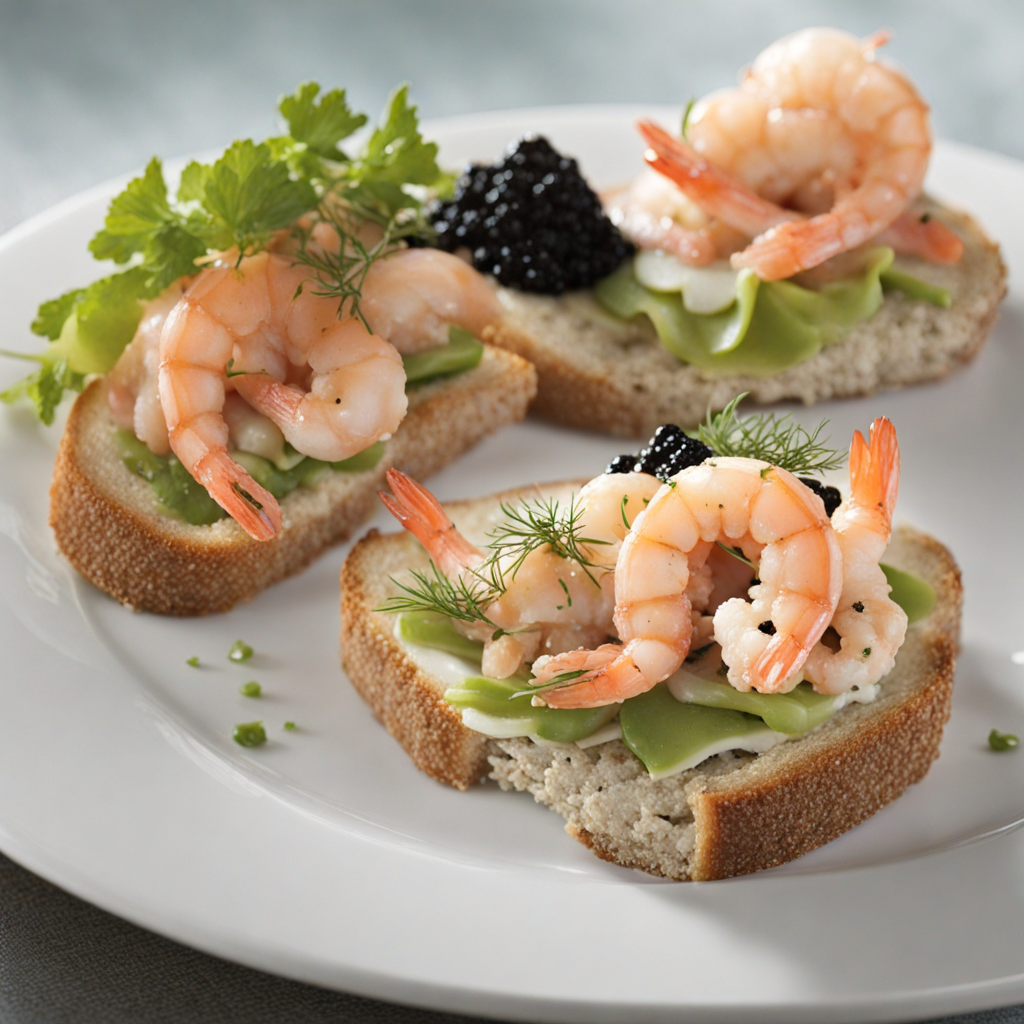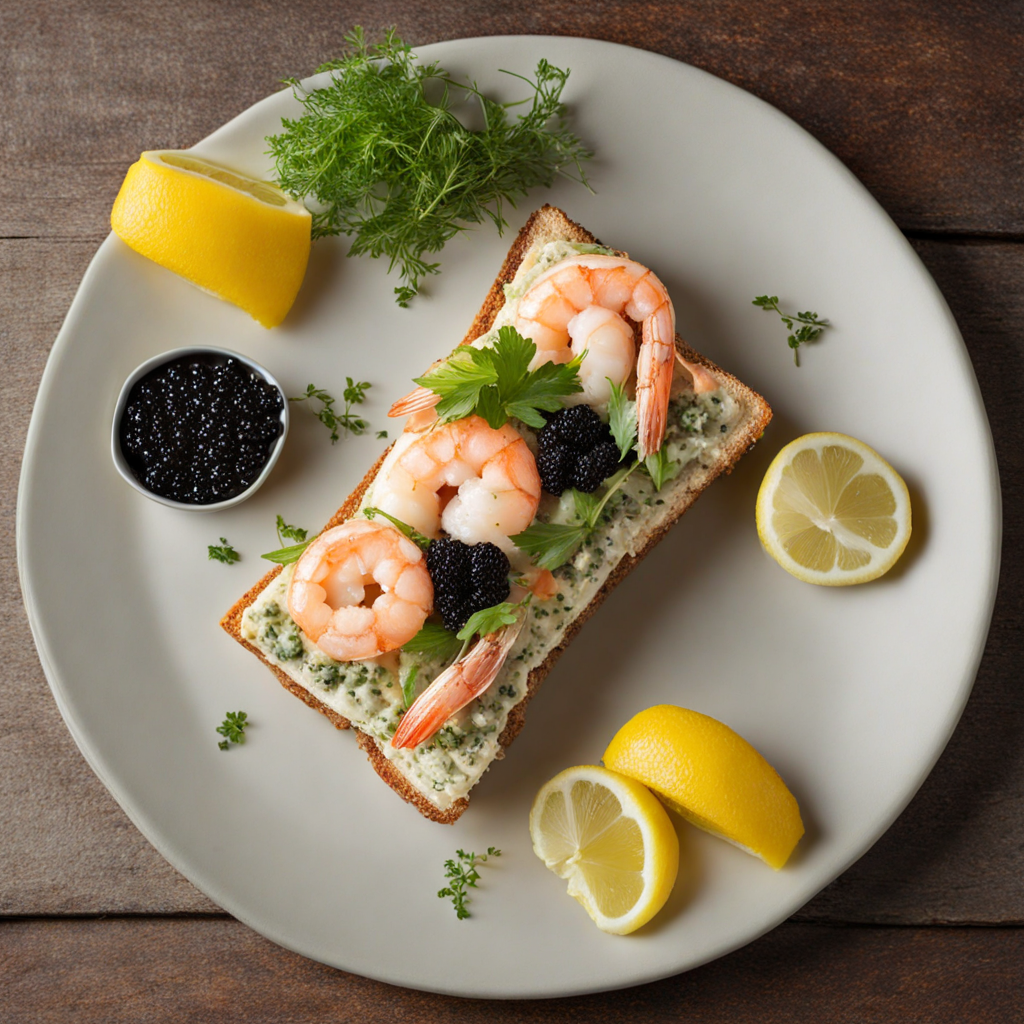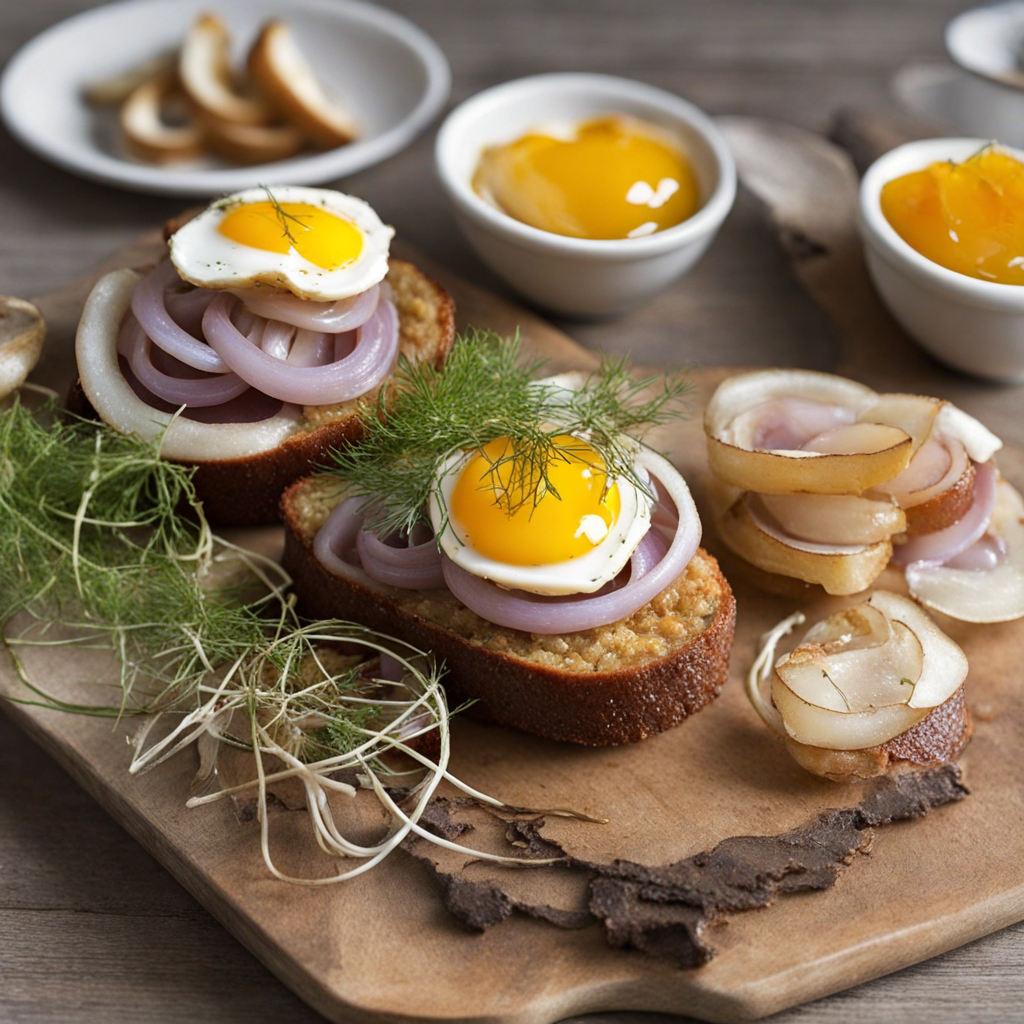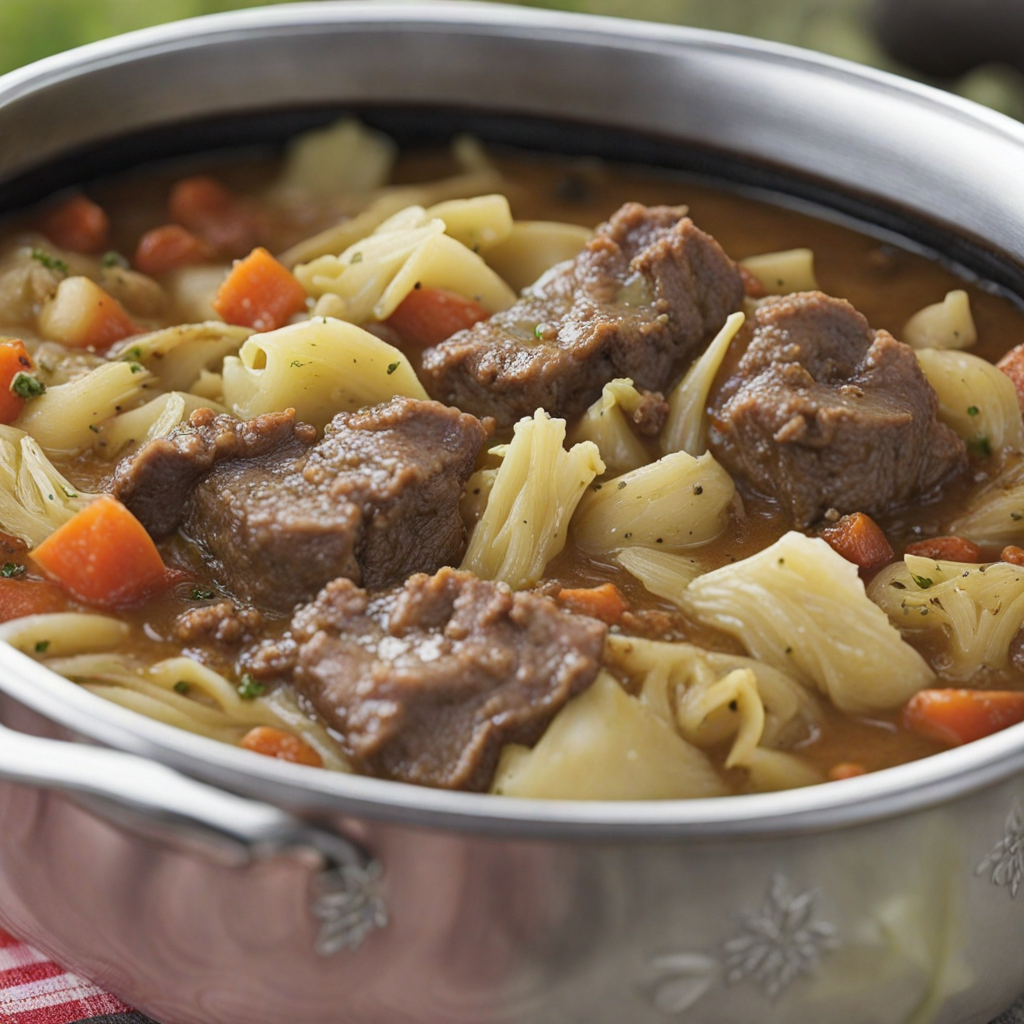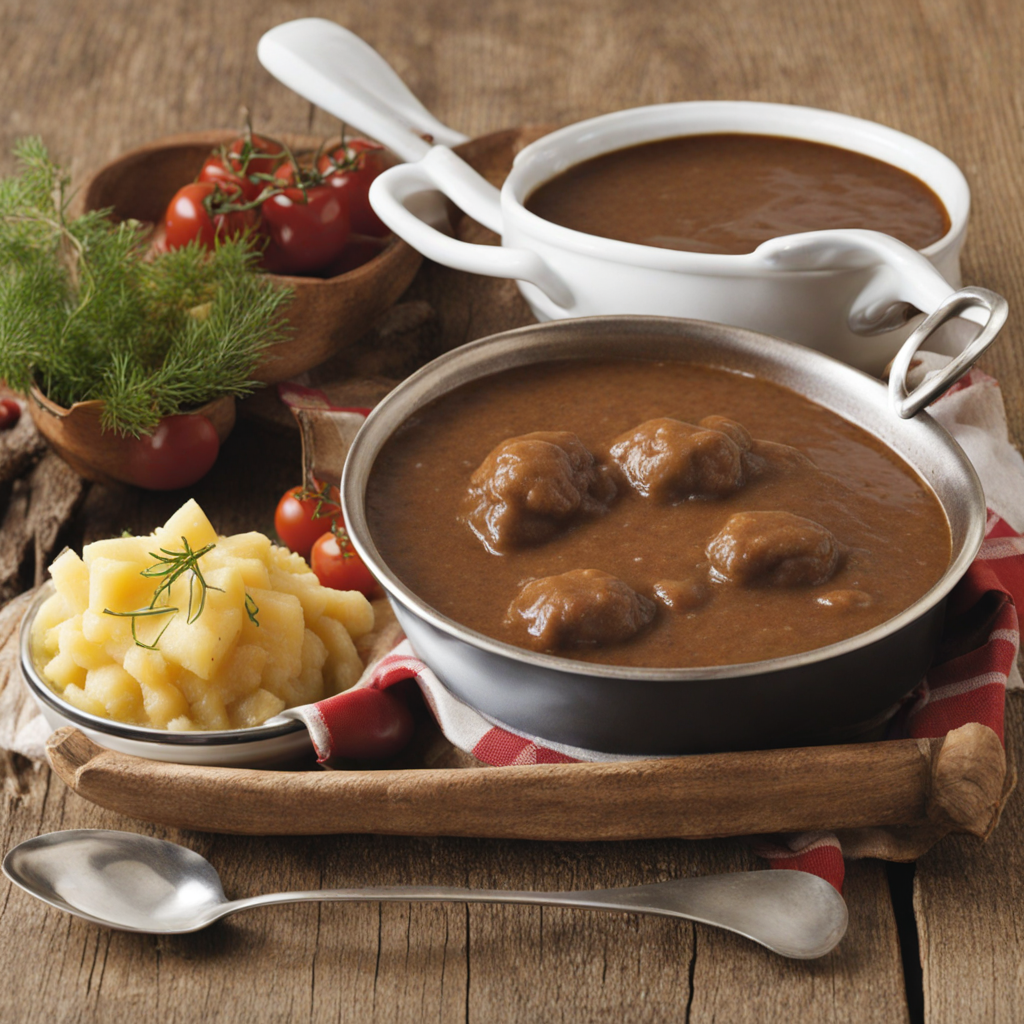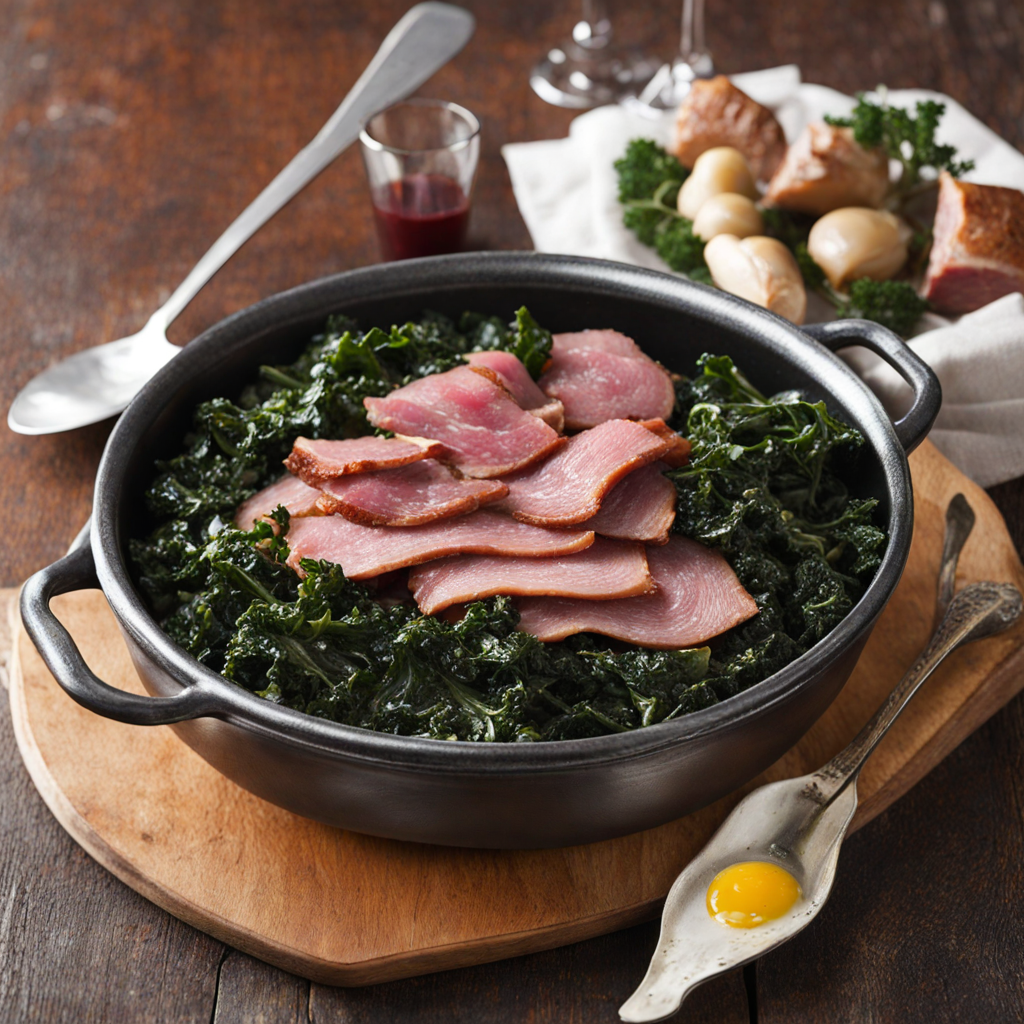Stjerneskud
Stjerneskud, translating to "shooting star" in Danish, is a delightful open-faced sandwich that captures the essence of Scandinavian cuisine. This dish typically features a base of dense, rye bread, which provides a hearty foundation. The bread is often slathered with a layer of creamy mayonnaise or a tangy remoulade, which adds a rich, velvety texture that complements the toppings beautifully. The combination of flavors begins with a generous portion of poached fish, usually sole or plaice, which is tender and flaky, providing a delicate taste of the sea that is characteristic of Danish coastal cuisine. To elevate Stjerneskud, the dish is adorned with crispy fried shrimp, which add a delightful crunch and a burst of flavor. The contrast between the soft fish and the crispy shrimp creates an exciting mouthfeel that keeps diners coming back for more. Fresh garnishes such as dill, lemon wedges, and capers lend a bright, zesty note, enhancing the overall experience. Each bite is a harmonious blend of textures and flavors, making Stjerneskud a standout dish that showcases the freshness of its ingredients. This open-faced sandwich is often served with a side of pickled vegetables or a light salad, which adds an extra layer of taste and visual appeal. The presentation is typically vibrant, with the colorful layers inviting you to indulge. Stjerneskud is not just a meal; it is an experience that embodies the simplicity and elegance of Danish cuisine, making it a must-try for anyone looking to explore new flavors and culinary traditions.
How It Became This Dish
The Enigmatic Journey of Stjerneskud: A Danish Culinary Delight Stjerneskud, translating to "shooting star" in English, is a beloved Danish dish that embodies the maritime heritage and culinary creativity of Denmark. With its origins rooted in the coastal regions, Stjerneskud symbolizes not just a meal but a slice of Danish cultural identity and history. The dish has undergone a fascinating evolution, reflecting the changes in Danish society, gastronomy, and the nation’s relationship with the sea. #### Origins: The Maritime Influence The history of Stjerneskud can be traced back to the early 20th century, particularly in the bustling port city of Aarhus. The dish is believed to have been invented in the 1930s, primarily as a way to elevate traditional Danish open-faced sandwiches, or "smørrebrød." Denmark has a long-standing maritime tradition, and the abundance of fresh fish and seafood along its coastlines played a significant role in shaping the nation’s culinary landscape. The original Stjerneskud was a simple yet elegant dish featuring fried fish, typically sole, served on a slice of buttered rye bread. It is often topped with a variety of garnishes, including shrimp, caviar, and a dollop of mayonnaise, creating a colorful, appetizing presentation that mirrors the vibrant coastal landscapes of Denmark. The dish’s name, "shooting star," is thought to evoke the idea of fine dining, with the visual appeal of the dish resembling a starry sky. #### Cultural Significance Stjerneskud holds a special place in Danish culture, particularly in the realms of hospitality and communal dining. It is often served in cafes and restaurants across Denmark, embodying the spirit of hygge—a concept that encompasses coziness, comfort, and togetherness. The dish is a popular choice for celebrations and gatherings, as it is both visually stunning and delicious, making it a centerpiece for festive occasions. Moreover, Stjerneskud reflects Denmark's appreciation for local ingredients and traditional cooking techniques. The emphasis on fresh, high-quality fish and seafood showcases the nation’s commitment to sustainability and respect for the sea. Additionally, the dish has become a symbol of Danish cuisine's evolution towards more refined presentations, bridging the gap between rustic and contemporary dining. #### Development Over Time As Denmark’s culinary scene has evolved, so too has Stjerneskud. The dish has embraced a variety of adaptations that reflect changing tastes and cultural influences. Throughout the latter half of the 20th century, Stjerneskud began to feature different types of fish, including plaice and cod, alongside the classic sole. This diversification was partly influenced by increasing globalization, which brought new culinary elements into Danish kitchens. In the 21st century, the dish has continued to adapt. Many chefs have taken creative liberties with Stjerneskud, incorporating elements from international cuisines while still honoring the traditional roots of the dish. For instance, some variations now include Asian-inspired sauces or toppings, reflecting Denmark’s growing cosmopolitanism and the blending of different culinary traditions. Furthermore, the rise of food tourism in Denmark has played a significant role in the dish’s popularity. As tourists flock to the country to experience its culinary delights, Stjerneskud has become a must-try dish, often featured on tasting menus and in gourmet restaurants. Its ability to combine simplicity with elegance has made it a favorite among both locals and visitors alike. #### Ingredients and Preparation The classic Stjerneskud consists of a base of buttered rye bread, topped with fried fish, often accompanied by a bed of fresh lettuce. The dish is usually adorned with a variety of garnishes, including: - Shrimp: Sweet, succulent shrimp are a staple in Stjerneskud, adding a burst of flavor and texture. - Caviar: Traditionally, fish roe or caviar is added, elevating the dish with a touch of luxury. - Mayonnaise: A rich and creamy dressing that ties the flavors together, often enhanced with herbs or spices for added depth. - Lemon: A squeeze of fresh lemon juice brightens the dish, cutting through the richness of the fish and mayonnaise. The preparation of Stjerneskud is relatively straightforward, yet the presentation is key. The dish is often served open-faced, allowing the vibrant colors and textures of the ingredients to shine. This aesthetic appeal is a crucial part of the Stjerneskud experience, as it invites diners to engage with the meal visually before indulging. #### Modern Interpretations and Future Prospects In recent years, the trend of "Nordic cuisine" has brought renewed attention to traditional dishes like Stjerneskud. Chefs across Denmark are reimagining the dish, focusing on seasonal ingredients, sustainability, and innovative cooking techniques. This modern approach often involves highlighting the natural flavors of the ingredients while maintaining the dish’s classic charm. As Denmark continues to assert itself on the global culinary stage, Stjerneskud remains a testament to the nation’s rich culinary heritage. It is a dish that tells the story of Denmark’s connection to the sea, its local ingredients, and the importance of community. With its evolving nature, Stjerneskud will likely continue to adapt and thrive, captivating future generations with its charm and deliciousness. #### Conclusion Stjerneskud is more than just a dish; it is a reflection of Denmark’s identity, culture, and gastronomic evolution. From its humble beginnings in the coastal towns to its status as a culinary icon, Stjerneskud embodies the essence of Danish cuisine—simple, fresh, and beautifully presented. As it continues to evolve, this "shooting star" of Danish gastronomy promises to shine brightly in the hearts and palates of those who encounter it, both at home and abroad. Whether enjoyed in a cozy café or a fine dining establishment, Stjerneskud remains a celebration of Denmark’s maritime legacy and culinary artistry.
You may like
Discover local flavors from Denmark


